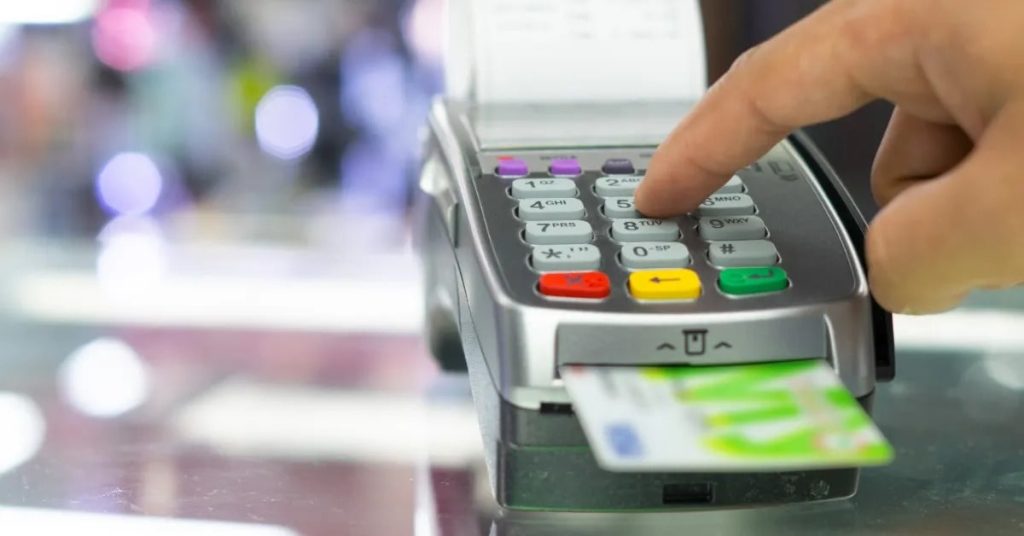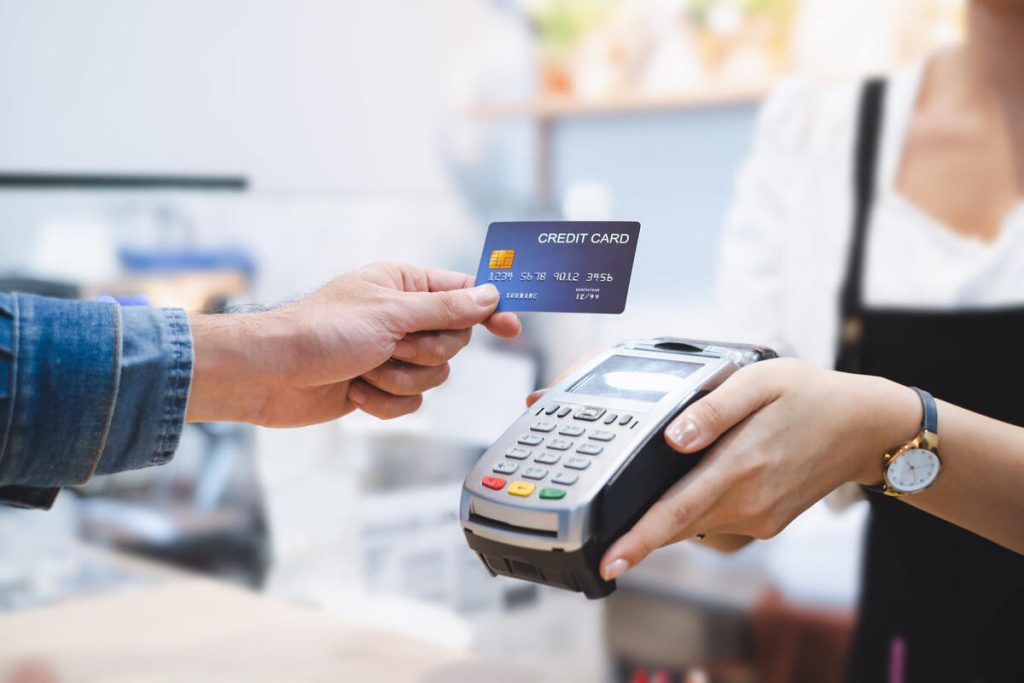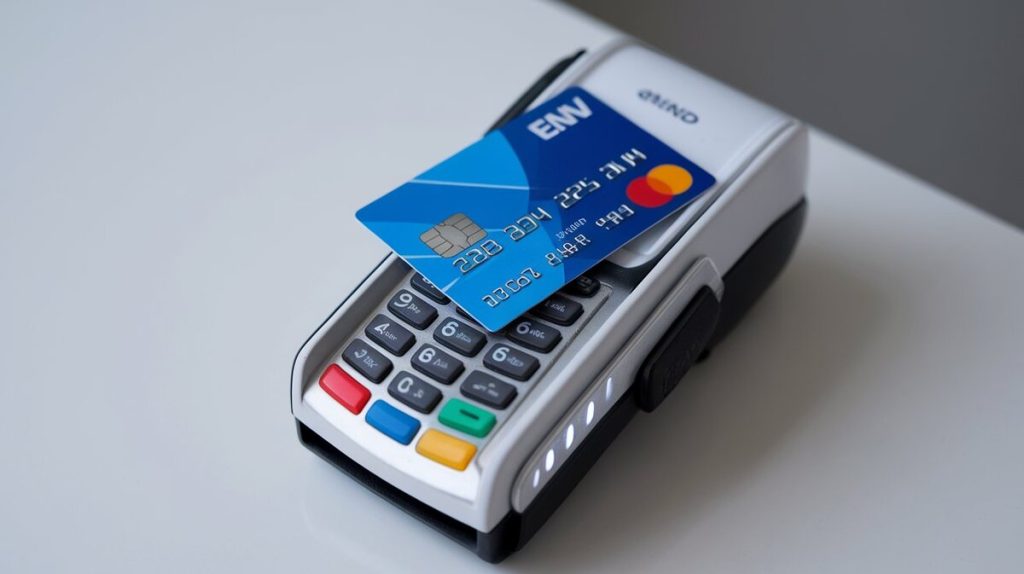Introduction
EMV (Europay, Mastercard, Visa) chip and PIN technology has become a global standard for secure payment transactions, designed to reduce credit card fraud. It was developed in response to the vulnerabilities of magnetic stripe cards, which could be easily cloned, leaving cardholders and merchants exposed to fraud.
In the U.S., EMV technology started its widespread adoption in 2015. As of 2023, 86% of global card transactions are processed using EMV technology (Mastercard). The system’s enhanced security, including dynamic encryption and PIN verification, has significantly lowered card-present fraud. This article explains how EMV chip and PIN works, its benefits, and its role in payment security.
What is an EMV Chip?
An EMV chip is an embedded microchip in credit and debit cards. Unlike magnetic stripe cards that transmit unencrypted cardholder data, EMV chips create a unique code for every transaction, ensuring the card’s data cannot be reused or intercepted.
EMV Chip Facts:
- Introduced in Europe in 1994.
- U.S. began large-scale adoption in 2015, with a liability shift by Visa and Mastercard making merchants liable for fraud if they didn’t upgrade to EMV technology (Visa, 2015).
- By 2022, global EMV adoption reached over 90% in regions like Europe, Latin America, and Asia (Checkout.com).
| Region | Adoption Rate (%) | Year |
|---|---|---|
| Europe | 98 | 2022 |
| Latin America | 92 | 2022 |
| North America (U.S.) | 86 | 2023 |
| Asia-Pacific | 90 | 2022 |
EMV chips also support offline transactions, verifying the card’s authenticity even without a direct connection to a central system.

How Does EMV Work?
The process of an EMV chip transaction is more secure than magnetic stripe technology. The chip communicates with the point-of-sale (POS) terminal through multiple steps, involving encryption and real-time verification.
- Card Dipping: The customer inserts the card into the POS terminal.
- Transaction Initialization: The EMV chip generates an encrypted transaction code.
- Verification: Depending on the card, the customer either enters a PIN or signs (chip-and-PIN vs. chip-and-signature).
- Data Transmission: The terminal sends encrypted data to the acquiring bank, which forwards it to the card issuer.
- Authorization: The card issuer approves or denies the transaction based on its internal checks.
- Completion: If approved, the transaction is completed.
The most important feature is dynamic encryption, which ensures the card generates a unique code for every transaction. This prevents cloning or reuse of the data.
| Step | Process | Security Benefit |
|---|---|---|
| Card Insertion (Dipping) | EMV chip communicates with POS | Reduces card skimming risk |
| Transaction Code | Generates unique transaction code | Prevents card cloning |
| Verification | PIN or signature authentication | Enhances fraud protection |
| Data Transmission | Encrypted transaction data | Protects data in transit |
Merchanto.org, an official partner of VISA and Mastercard, assists merchants in preventing chargebacks and offers tools to ensure compliance with EMV standards. Learn more at Merchanto.org
The Role of PIN in EMV Transactions
EMV often uses a Personal Identification Number (PIN) for additional security. A PIN is a 4-6 digit number the cardholder enters to verify identity during the transaction.
- Chip-and-PIN is common in Europe and Asia, requiring PIN entry for all transactions. This method is more secure because it provides a second layer of protection.
- Chip-and-signature is more common in the U.S., where customers sign a receipt. However, signatures are less secure as they can be forged.
Why PIN is More Secure:
- Authentication by Cardholder: Only the cardholder knows the PIN.
- Preventing Unauthorized Transactions: Even with a stolen card, a thief cannot complete the transaction without the PIN.
- Fewer Chargebacks: Merchants using chip-and-PIN have fewer chargebacks related to fraudulent transactions.
| Verification Method | Security Level | Used Primarily In |
|---|---|---|
| Chip-and-PIN | High (two-factor authentication) | Europe, Asia |
| Chip-and-Signature | Moderate (signature can be forged) | North America, some regions |

Benefits of EMV Chip and PIN Technology
- Fraud Prevention: EMV reduces card-present fraud by making it almost impossible to clone the card. Since the introduction of EMV in the U.S., fraud rates have dropped by 70% (Mastercard).
- Global Acceptance: As the global standard, EMV cards can be used worldwide without issue.
- Reduced Liability for Merchants: Merchants who don’t adopt EMV technology face liability for fraudulent transactions. The liability shift introduced in 2015 places responsibility on merchants for fraud if they don’t use EMV-capable terminals.
Fraud Reduction Statistics (U.S.):
| Year | Fraud Reduction Rate (%) | Source |
|---|---|---|
| 2015 | 20% | Visa |
| 2016 | 39% | Mastercard |
| 2020 | 70% | Mastercard, Stripe |
Challenges and Future of EMV
While EMV has been successful in reducing card-present fraud, it faces a few challenges:
- Slow Adoption in Certain Sectors: Some industries, such as gas stations, took longer to implement EMV due to the cost of upgrading infrastructure. As of 2021, U.S. gas stations must be EMV-compliant to avoid liability (Visa, 2021).
- Card-Not-Present Fraud: While EMV reduces in-person fraud, card-not-present fraud (CNP) has increased. As of 2023, CNP fraud accounted for 80% of all credit card fraud (Checkout.com).
Future improvements include contactless EMV and biometric verification, which are expected to enhance security and convenience further.
Conclusion
EMV chip and PIN technology has improved the security of credit and debit card transactions globally. Its dynamic encryption and PIN verification reduce fraud, making it harder for criminals to clone or misuse cards. Merchants who adopt EMV also reduce their liability for fraudulent transactions.
The future of EMV includes advancements like contactless payments and biometric verification, ensuring continued security for cardholders and merchants.
This article is based on data from reliable sources such as Mastercard, Visa, and Stripe, ensuring accurate and up-to-date information.



